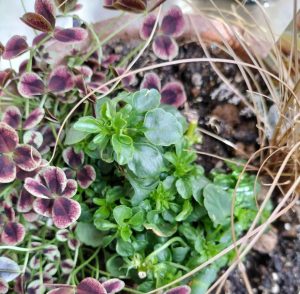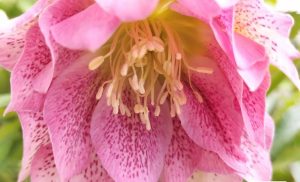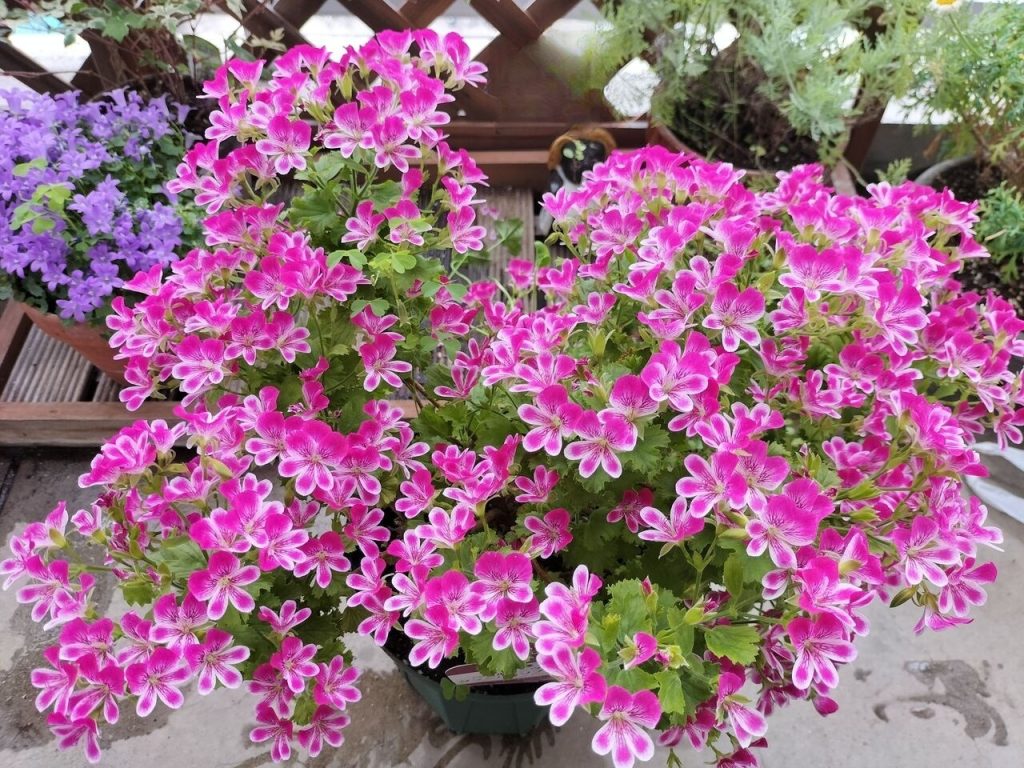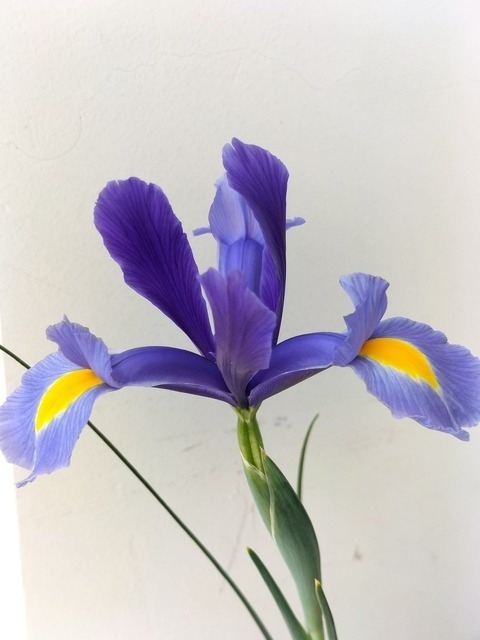Around mid-summer last year, I started reading books about natural cultivation, and I wanted to garden without using pesticides or fertilizers as much as possible.
That’s when I suddenly came up with the idea of composting food waste.
When I got rid of the summer flowers, I had a lot of leftover soil, so I decided to add some kitchen scraps to it and make compost.
I immediately started on December 10th of last year by combining methods I researched on the internet with my own methods.
My method is
1. Don’t sift the soil after summer flowers have been removed, just remove the visible roots and debris and transfer it to an empty planter.
2. Garbage that is hard enough to be eaten raw by humans (vegetable and fruit scraps, coffee grounds, etc.) is chopped into pieces about 7mm in size and mixed with raw rice bran.
3. Bury 2. deeply in 1. with microbial materials (*) and give water.
4. Water when the soil dries out, and dig it up every month to see how it’s doing.
The method I looked up on the internet didn’t say to use rice bran or microbial materials, but I wanted to try that, so I added them.
The reason for digging it up every month is to see how it goes, but I read that old compost was mixed (?) to maintain a balance between anaerobic and aerobic bacteria. , I tried to follow suit.
I don’t have any photos from the day I started composting, so I’ll post what it looks like a month later.
◆Approximately one month later (January 17, 2024)
I found that the garbage had formed a clump with a white film on it. I loosened it up with a shovel.
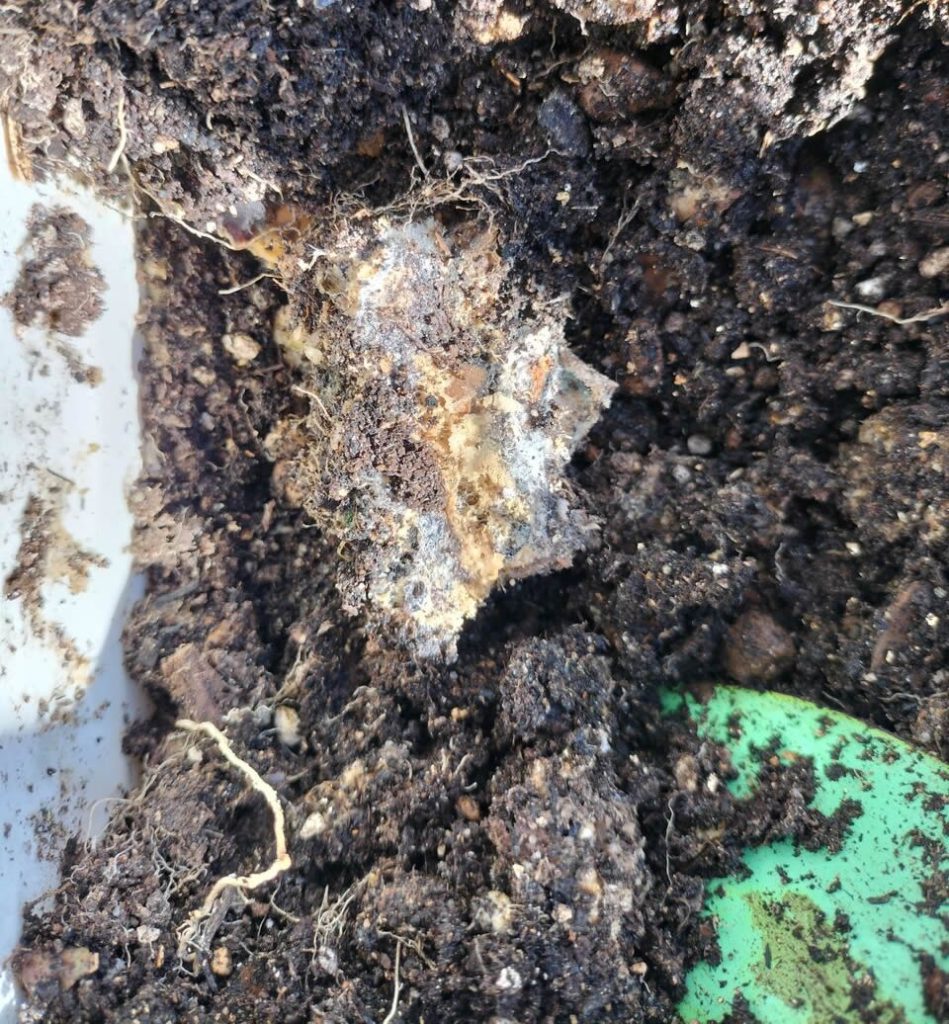
When we dug up other areas, we still saw the remains of garbage, and the roots that had not been removed were also noticeable.

Although it was warm in December, there was no smell and no insects, probably because the garbage was buried deep in the soil.
The soil that was dug up also had a gentle sweet-sour fragrance.
◆Approximately 2 months later (February 16, 2024)
There is almost no garbage to be seen. But some kind of root? Something like this was growing in the soil.
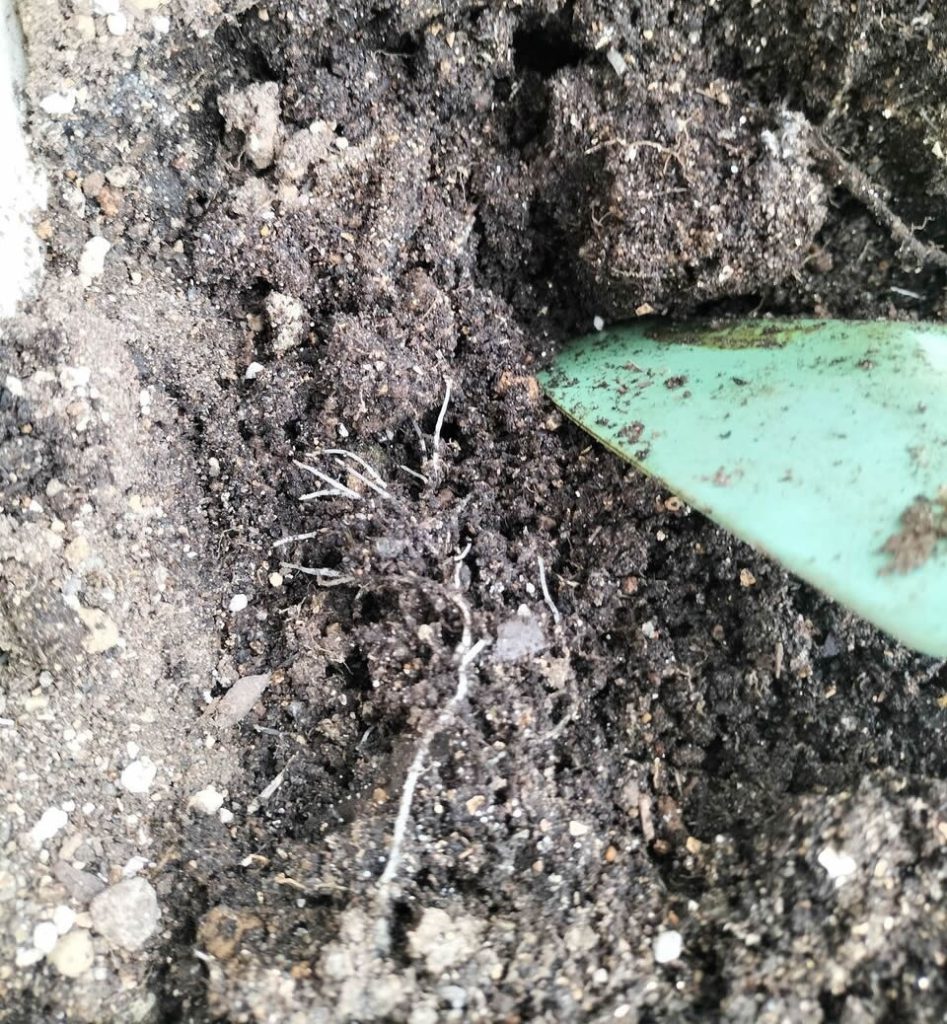
Add new compost.
This time, we didn’t put any garbage in, but instead buried the roots of discarded summer seedlings along with microbial materials.
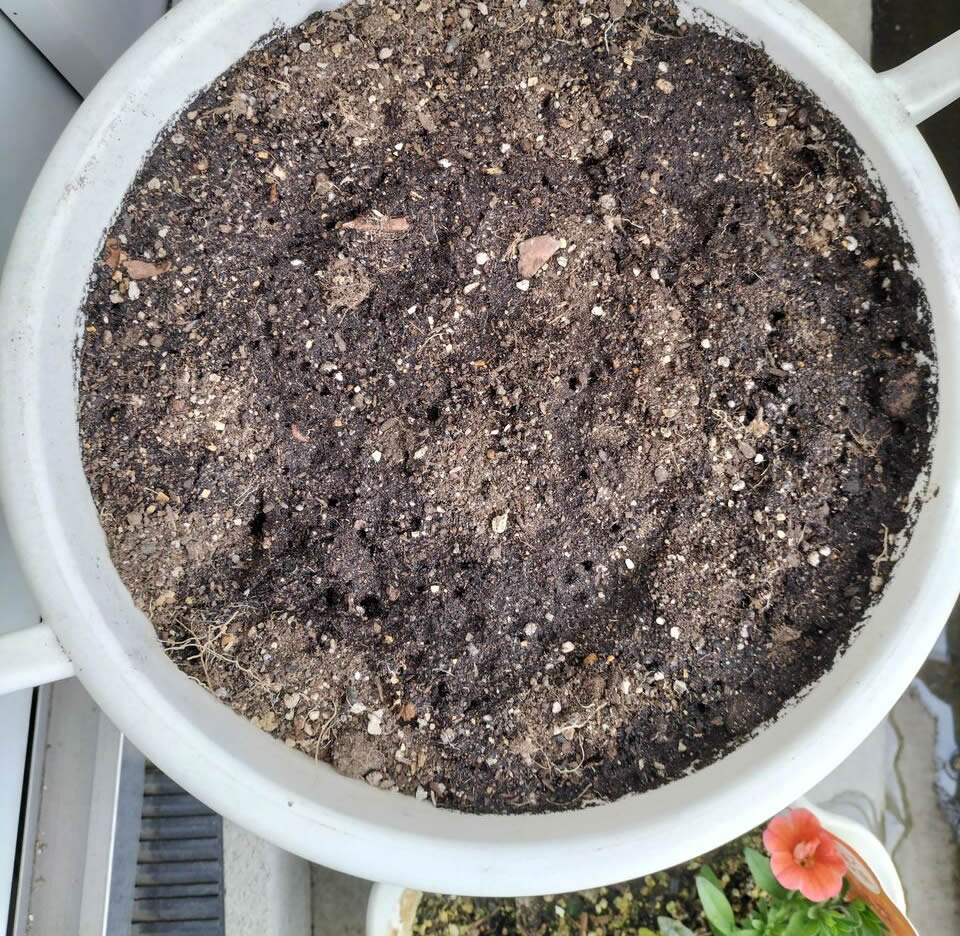
This time there was no bad odor or insects.
The soil continued to emit a pleasant, sweet and sour scent, and I felt that the previously hard soil had become soft and easy to handle.
◆Approximately 3 months later (March 11, 2024)
No shape of vegetable scraps could be seen. The white roots I found in February were growing in the soil.

Some buds had sprouted, so I left them as they were because they were cute.
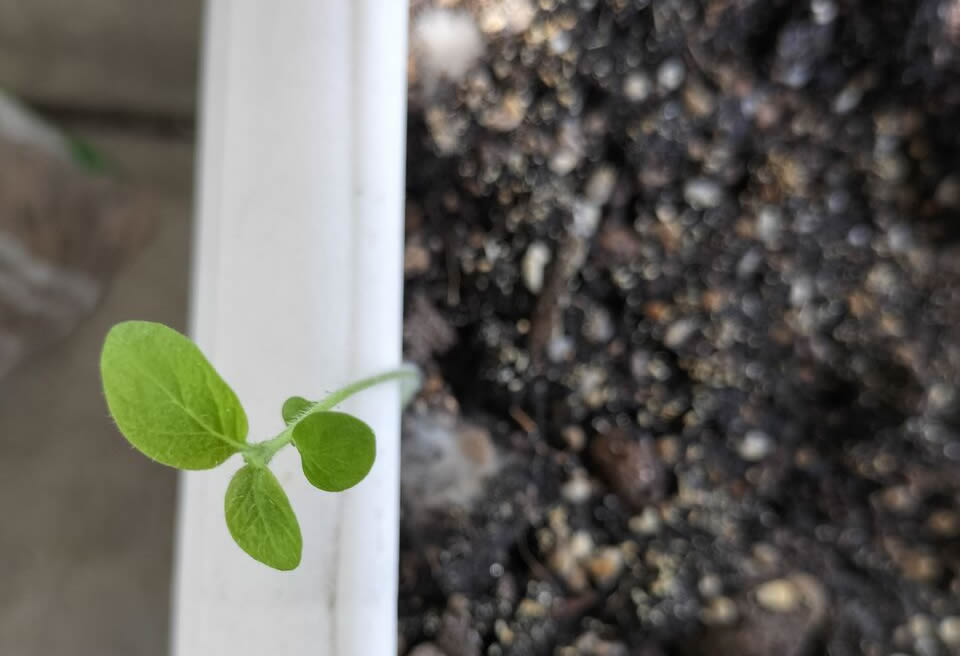
The compost, which mainly consists of roots, seems to have decomposed to the point that you can’t even tell that there were quite a lot of roots in it.
(The white fluff is microbial material)

As expected, there is no bad odor, no insects, and a gentle sweet and sour scent.
Thinking about using the soil from summer, I planted clover in order to prevent the soil from drying out, encourage aggregate structure, and fix nitrogen in the soil.
I think things are going well for now.
But I started in the middle of winter, when insects are less likely to spawn, so it might be a tough time for the real thing.
According to Akinori Kimura, the famous “miracle apple,” compost must be left to rest for five years before it fully ripens and attracts insects.
It would be difficult to let them sit on a small balcony for five years, so I’m going to give up and plant summer seedlings in May.
I want to continue to enjoy and observe what will happen.

